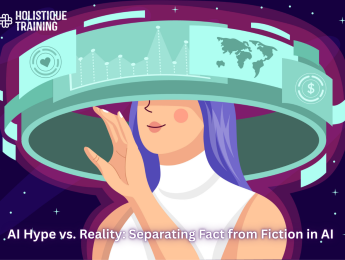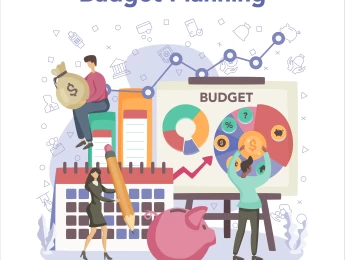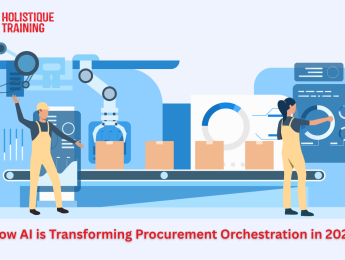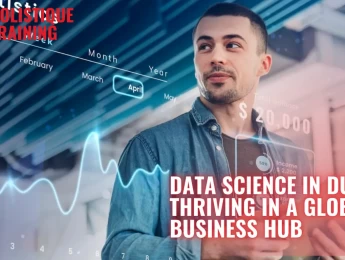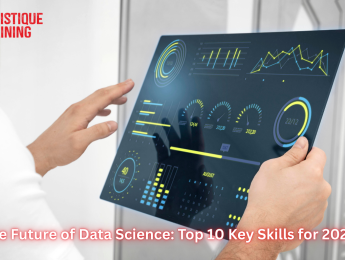- Table of Contents
- Introduction: The Rise of AI Hype
- What Drives the Hype Around AI?
- Media sensationalism
- Startup funding & marketing
- Pop culture influence
- Tech giants & PR narratives
- The Reality: What AI Can Actually Do (Now)
- Natural Language Processing (NLP)
- Computer Vision
- Predictive Analytics
- Generative AI
- Limitations
- Case Studies of Overhyped AI Projects
- IBM Watson in healthcare
- Self-driving cars: promises vs. current progress
- Chatbots that failed businesse
- Cryptocurrency + AI scams
- Case Studies of AI Delivering Real Value
- AI in drug discovery & healthcare diagnostics
- AI in fraud detection & cybersecurity
- AI in agriculture & climate monitoring
- Accessibility tools
- The Problem of Misconceptions
- AI vs. AGI confusion
- Belief in full autonomy
- Job replacement myths
- Ethical panic vs. measured regulation
- Economic & Business Perspectives: ROI of AI Projects
- Social & Ethical Dimensions: Beyond the Hype
- AI Research vs. AI Marketing
- AI in Everyday Life and the Road Ahead
- Conclusion
Introduction: The Rise of AI Hype
Artificial Intelligence (AI) is one of the most talked-about technologies of our time. From the earliest computer programmes in the 1950s to the deep learning breakthroughs of the 2010s, AI has evolved into a field that attracts massive investment, public fascination, and heated debate. The term “artificial intelligence” was first coined in 1956 at the Dartmouth Conference, marking the birth of a discipline that promised to replicate aspects of human reasoning through machines. For decades, progress was slow, punctuated by periods of stagnation often referred to as “AI winters”. Yet, in the last decade, the availability of big data, increased computing power, and advanced neural networks have reignited interest in the field.
The resurgence of AI has not only been technological but also cultural. Media outlets regularly publish headlines claiming that AI will either revolutionise every aspect of life or replace entire industries. Startups often attract venture capital by presenting their tools as game-changing, even when the technology is still experimental. Tech giants such as Google, Microsoft, and OpenAI amplify these expectations further through branding campaigns that suggest their platforms can deliver human-level intelligence. As a result, “AI” has become a buzzword, frequently attached to everything from healthcare products to smartphone apps, regardless of whether machine learning is actually involved.
In this article, we will cut through the noise by exploring the drivers behind the hype, examining what AI can and cannot currently do, and presenting real-world case studies of both failure and success. We will discuss misconceptions that cloud public understanding, economic and business perspectives on adoption, and the ethical challenges surrounding AI deployment. Ultimately, this analysis will help readers separate inflated promises from genuine value, providing a more grounded perspective on the role of AI in society today.
What Drives the Hype Around AI?
Media sensationalism
The media plays a pivotal role in shaping public opinion about AI. Sensationalist headlines often focus on machines surpassing human intelligence or robots taking over jobs, framing AI as either a miracle or a threat. Such portrayals attract readership but rarely reflect the nuances of research progress. For example, headlines about AI writing novels or “becoming conscious” ignore the limitations of current systems, which rely on statistical pattern recognition rather than genuine comprehension.
Startup funding & marketing
Startups frequently exaggerate their capabilities to secure venture capital. A 2023 report by MMC Ventures revealed that 40% of European startups classified as “AI companies” did not actually use AI in a significant way. This shows how the hype serves as a financial magnet, allowing entrepreneurs to attract funding based on branding rather than functionality. Investors, motivated by fear of missing out, often push bold claims that only reinforce inflated expectations.
Pop culture influence
Films such as Ex Machina, Her, and The Matrix have deeply influenced how society imagines AI. These portrayals often depict machines that can think, feel, or surpass human beings, embedding the idea that artificial general intelligence (AGI) is imminent. While such depictions spark imagination, they blur the line between speculative fiction and scientific reality, fueling misconceptions.
Tech giants & PR narratives
Tech giants also contribute heavily to the hype cycle. Microsoft positions Copilot as an “AI-powered assistant” capable of transforming productivity, while Google brands nearly all its products under “AI-first” initiatives. OpenAI, with the release of ChatGPT, described its systems as tools that could “reason” and “create”. Such language can be misleading, as it downplays the limitations of statistical models. A PwC study estimated that AI could contribute up to $15.7 trillion to the global economy by 2030, further fueling business expectations, even though real-world adoption remains uneven.
The Reality: What AI Can Actually Do (Now)
Natural Language Processing (NLP)
Current NLP models can generate human-like text, translate languages, summarise documents, and respond to queries in conversational formats. Chatbots such as ChatGPT or Google’s Bard demonstrate fluency but lack genuine understanding. They are statistical engines that predict the most likely next word rather than conscious thinkers.
Computer Vision
AI has made impressive progress in computer vision, powering facial recognition systems, autonomous vehicle perception, and diagnostic imaging in healthcare. AI models can detect tumours in radiology scans with accuracy comparable to doctors, although deployment must be supervised to ensure safety.
Predictive Analytics
Machine learning models are widely used for predicting customer behaviour, managing supply chains, and modelling climate risks. For example, financial institutions employ AI for credit scoring and fraud detection. While highly effective in structured domains, predictive models struggle when data is biased or incomplete.
Generative AI
Generative AI can create text, images, video, and even music. Tools like DALL·E and MidJourney have captured public imagination by producing photorealistic images from text prompts. However, generative models often reproduce biases in training data and can “hallucinate” false information.
Limitations
Despite achievements, AI remains limited. Systems often produce errors when facing unfamiliar data, depend heavily on high-quality datasets, and cannot replicate human-level reasoning. AI also inherits societal biases, raising fairness and ethical concerns.
Case Studies of Overhyped AI Projects
IBM Watson in healthcare
IBM Watson was marketed as a revolutionary diagnostic tool that would transform oncology. In practice, hospitals reported limited accuracy, and projects were quietly scaled down. A study by STAT News revealed that doctors found Watson’s recommendations frequently irrelevant.
Self-driving cars: promises vs. current progress
Autonomous vehicles were expected to dominate roads by the early 2020s. However, they remain limited to pilot projects in controlled environments. Issues such as safety, regulation, and real-world unpredictability continue to delay mass adoption.
Table: Self-Driving Cars – Hype vs. Reality
Aspect | Hype (2015–2020) | Reality (2025) |
Timeline for adoption | Fully autonomous cars by 2020 | Limited trials in select cities |
Safety claims | Safer than humans | Still facing accidents & ethical dilemmas |
Market penetration | Expected mainstream | Mostly experimental |
Regulation | Anticipated clear frameworks | Patchy global regulations |
Chatbots that failed businesse
Many companies rushed to implement chatbots expecting them to replace human customer service. Instead, poorly trained models frustrated customers, leading to reputational damage. Gartner estimated that 85% of AI projects fail to deliver their intended outcomes.
Cryptocurrency + AI scams
Fraudulent projects often combine buzzwords like “blockchain” and “AI” to attract investors. Many initial coin offerings promised AI-powered trading but were later exposed as scams, eroding trust in the sector.
Case Studies of AI Delivering Real Value
AI in drug discovery & healthcare diagnostics
AI accelerates drug discovery by screening molecular structures. During the COVID-19 pandemic, AI helped identify potential antiviral compounds faster than traditional methods.
AI in fraud detection & cybersecurity
Banks employ AI to detect unusual transactions in real time, reducing fraud. Machine learning enhances intrusion detection systems by identifying anomalous patterns that humans might overlook.
AI in agriculture & climate monitoring
AI-driven drones and sensors enable precision farming, helping farmers optimise irrigation and reduce waste. Climate scientists use AI to model global warming effects, aiding policy planning.
Accessibility tools
AI underpins accessibility solutions such as voice recognition for the hearing impaired and screen readers for the visually impaired. These technologies empower inclusion and independence.
The Problem of Misconceptions
AI vs. AGI confusion
People often confuse narrow AI (task-specific systems) with AGI (human-level intelligence). Current systems are narrow; AGI remains speculative.
Belief in full autonomy
There is a misconception that AI operates without human oversight. In reality, systems require constant monitoring, retraining, and ethical review.
Job replacement myths
Fears that AI will replace all jobs overlook its role in augmenting human work. Many professions integrate AI as a tool rather than a replacement.
Ethical panic vs. measured regulation
Headlines about AI taking over the world stoke unnecessary fear. Balanced regulation, such as the EU’s AI Act, is emerging to address risks without halting innovation.
Table: Common Misconceptions About AI
Misconception | Reality |
AI = AGI | Current AI is narrow and task-specific |
AI is fully autonomous | Requires human supervision |
AI will replace all jobs | Augments more than replaces |
AI is inherently dangerous | Risks are contextual and manageable |
Economic & Business Perspectives: ROI of AI Projects
The economic potential of AI has been widely publicised, with consultancy firms such as PwC projecting that AI could add up to £12 trillion to global GDP by 2030. Yet, the reality within organisations often tells a different story. Despite billions of pounds in investment, a large proportion of AI initiatives fail to deliver measurable returns. Gartner’s well-cited statistic—that only 53% of AI projects progress from prototype to production—illustrates the gap between enthusiasm and execution.
Several factors contribute to these disappointing outcomes. First, many projects begin with ill-defined objectives. Businesses adopt AI because competitors are doing so or because executives fear being left behind, rather than identifying specific problems AI could solve. Without clear goals, projects drift, and the outputs fail to align with strategic priorities. Second, data quality remains a stumbling block. AI systems thrive on vast amounts of clean, structured data, yet many firms discover that their internal datasets are fragmented, inconsistent, or insufficient.
The “AI Hype Cycle”, a framework popularised by Gartner, maps out this dynamic: initial excitement and inflated expectations are followed by disillusionment when promised results fail to materialise. Only after this phase do organisations gradually develop realistic applications that generate value.
Another complication is what economists call the productivity paradox. Despite AI tools being widely available, productivity growth has not accelerated at the pace one might expect. Adoption remains uneven, with sectors like finance and technology embracing AI rapidly, while industries such as education or healthcare lag due to regulatory, ethical, or resource constraints.
Organisational barriers also impede success. Integrating AI into business processes often requires cultural change, staff retraining, and cross-department collaboration. Many companies underestimate these challenges, treating AI as a plug-and-play solution rather than a long-term transformation initiative. On the other hand, firms that carefully align AI adoption with clear business strategies—such as logistics companies optimising supply chains or e-commerce platforms personalising customer experiences—tend to reap tangible benefits, demonstrating that ROI is possible when hype is tempered with planning.
Social & Ethical Dimensions: Beyond the Hype
The social and ethical implications of AI extend far beyond technological considerations. One of the most pressing challenges is algorithmic bias. AI systems learn from historical data, which often reflects existing inequalities. As a result, models used in hiring processes may disadvantage candidates from underrepresented backgrounds, while predictive policing algorithms have been shown to disproportionately target minority communities. These outcomes risk reinforcing, rather than correcting, structural injustices.
Privacy concerns are equally urgent. Facial recognition systems, deployed in airports, retail stores, and even schools, raise questions about surveillance and civil liberties. In China, for example, large-scale facial recognition is used to monitor public behaviour, sparking international debates about human rights. In liberal democracies, the discussion centres on where to draw the line between security and privacy, and whether individuals should have the right to opt out of such systems.
Another ethical dimension is the rise of deepfakes and synthetic media. Tools capable of generating convincing audio or video forgeries can be used for harmless entertainment, but they also pose serious risks for misinformation, fraud, and political manipulation. The ability to fabricate realistic footage of public figures threatens democratic processes, as citizens may struggle to distinguish fact from fabrication.
Employment remains perhaps the most visible area of public concern. While some fear a dystopian scenario where machines render human workers obsolete, the picture is more nuanced. According to the World Economic Forum, AI will displace around 85 million jobs but create 97 million new roles by 2025. These new roles will often focus on human–AI collaboration, such as managing, auditing, or enhancing automated systems. The future of work, therefore, is less about elimination and more about transformation. The key challenge will be ensuring that workers are reskilled and supported during transitions, to prevent widening socioeconomic divides.
Ultimately, the ethical debate highlights that AI is not merely a technical innovation—it is a societal force. How it is governed, regulated, and integrated into public life will shape not only economic outcomes but also cultural values, rights, and freedoms.
AI Research vs. AI Marketing
The gap between academic research and corporate marketing is one of the most significant drivers of hype. Researchers in universities and laboratories typically adopt a cautious stance. Their work focuses on incremental improvements in model accuracy, fairness, and efficiency. They publish results in peer-reviewed journals, carefully noting limitations and uncertainties. In contrast, corporate marketing departments often present AI technologies as revolutionary, framing them as near-magical solutions that are ready for immediate adoption.
For instance, a research team might publish a paper stating that a natural language model demonstrates promising performance in controlled benchmarks but still struggles with factual consistency. A company’s marketing team, however, may translate this into a bold claim that the product can “understand and generate human language”. Such oversimplification is effective for attracting investors, customers, and media attention, but it blurs the line between capability and aspiration.
This divergence is captured in the following table:
Table: AI Research vs. AI Marketing
Focus Area | Researchers | Marketers |
Core aim | Improving accuracy, fairness, and efficiency | Driving sales and investor interest |
Language | Technical, cautious, focused on limitations | Optimistic, simplified, often exaggerated |
Timeframe | Long-term progress over years or decades | Immediate adoption and impact |
Risk view | Emphasises ethical risks, data bias, and model fragility | Downplays risks to emphasise opportunity |
This discrepancy creates public misconceptions. Consumers may expect AI to perform like fictional portrayals in films or marketing campaigns, only to be disappointed when systems make errors or fail in real-world contexts. Furthermore, when projects collap se under these unrealistic expectations, scepticism and mistrust increase, feeding into cycles of both hype and disillusionment.
Bridging this gap requires greater transparency and communication between researchers, practitioners, and the public. Organisations that present realistic assessments of their technology, while acknowledging limitations, will be better positioned to build trust and achieve sustainable adoption.
AI in Everyday Life and the Road Ahead
Artificial Intelligence is no longer a futuristic concept confined to research labs or science fiction; it has quietly woven itself into the fabric of everyday life. Much of this integration happens almost invisibly, enhancing convenience and efficiency without drawing explicit attention. Recommendation systems are a prime example: platforms such as Netflix, Spotify, and Amazon employ sophisticated machine learning models to predict individual preferences, ensuring that users are presented with films, music, or products tailored to their tastes. These systems rely on vast datasets and complex algorithms, but for the end-user, the experience feels seamless and intuitive.
Navigation applications like Google Maps and Waze further demonstrate AI’s practical impact. By analysing millions of data points in real time, including GPS signals, user reports, and traffic sensors, these platforms can predict congestion, suggest alternative routes, and even estimate arrival times with remarkable accuracy. Similarly, spam filters in email platforms keep inboxes manageable by identifying malicious or irrelevant content, while AI-driven cybersecurity solutions detect unusual patterns that signal potential phishing attacks or data breaches. Even consumer-facing assistants such as Siri, Alexa, and Google Assistant—though limited in scope—illustrate how voice recognition and natural language processing have brought AI into the home, enabling users to set reminders, control devices, and access information effortlessly.
These quiet success stories highlight a crucial point: AI’s greatest achievements often lie not in headline-grabbing breakthroughs, but in the incremental improvements that make daily life smoother and safer. They also remind us that AI’s influence is already pervasive, even when it is not immediately visible.
Looking ahead, the trajectory of AI development reflects a complex blend of realistic progress and unresolved uncertainties. In the short term, we can expect to see AI copilots integrated across productivity tools, helping professionals draft documents, analyse data, or generate creative content. Education may become increasingly personalised, with AI-driven platforms adapting lessons to the pace and style of each student. Industries such as manufacturing, logistics, and healthcare are already testing automation and predictive analytics at scale, suggesting that operational efficiency will continue to improve.
However, long-term questions remain unanswered. The prospect of achieving Artificial General Intelligence (AGI)—a system capable of reasoning and learning across domains at a human level—remains speculative. While some experts predict breakthroughs within decades, others caution that AGI may never be realised. This uncertainty fuels both optimism and anxiety, illustrating the divide between hype and practical reality.
Adoption patterns also reveal the gap between experimentation and impact. A 2023 McKinsey report found that while 79% of businesses had experimented with AI tools, only 22% had successfully scaled them across their organisations. This demonstrates that while enthusiasm is widespread, structural, financial, and cultural barriers hinder effective implementation. Bridging this divide requires not only technological capability but also organisational readiness, leadership support, and ethical frameworks.
For societies to navigate this future wisely, AI literacy will be indispensable. Policymakers must understand the nuances of regulation to balance innovation with accountability. Businesses must grasp both the opportunities and limitations of AI to avoid costly missteps. Individuals, too, need a level of awareness that empowers them to use AI responsibly, recognising its benefits while staying alert to risks such as misinformation or bias.
In sum, the story of AI sits at the intersection of quiet, everyday success and ambitious, uncertain futures. Its value lies not in miraculous promises but in consistent, thoughtful integration into human systems. By acknowledging both the current realities and the limits of speculation, we can chart a course where AI becomes a trusted partner in solving problems rather than a source of unfulfilled hype.
Conclusion
Artificial Intelligence has come a long way, but it is neither the miracle cure nor the existential threat portrayed in popular discourse. The hype is fueled by media, startups, tech giants, and pop culture, but the reality is more nuanced: AI delivers significant value in healthcare, finance, and everyday applications, yet it remains constrained by limitations such as bias and lack of autonomy.
Balanced perspectives are crucial. By distinguishing inflated promises from practical achievements, society can embrace AI responsibly. Rather than viewing AI as magic, it should be recognised as a transformative tool—powerful when used wisely, but not beyond scrutiny.


